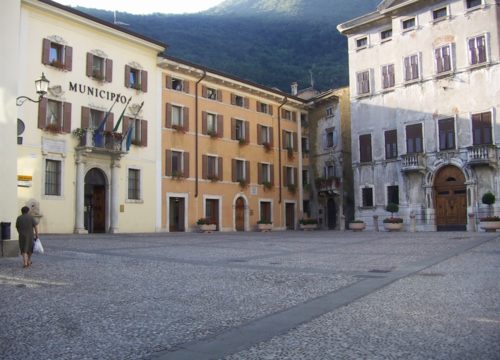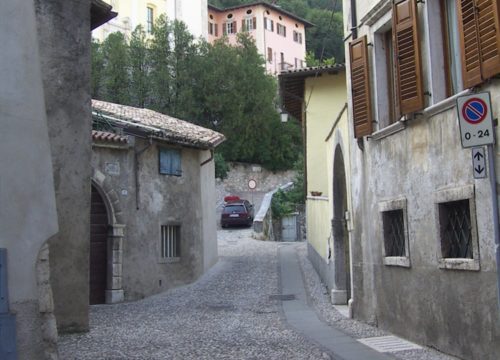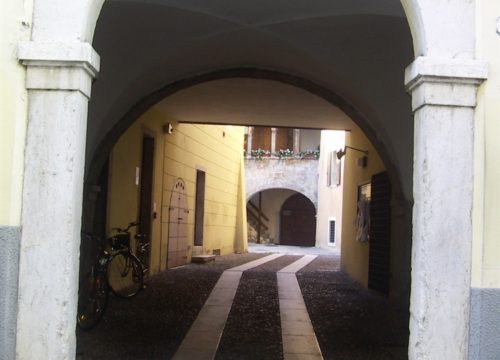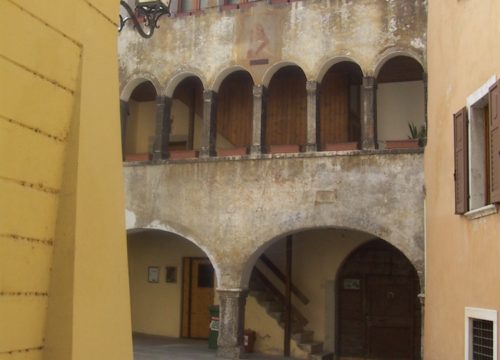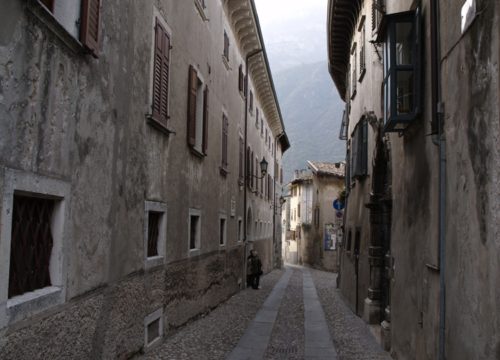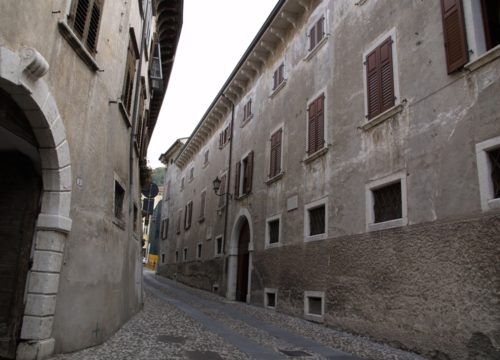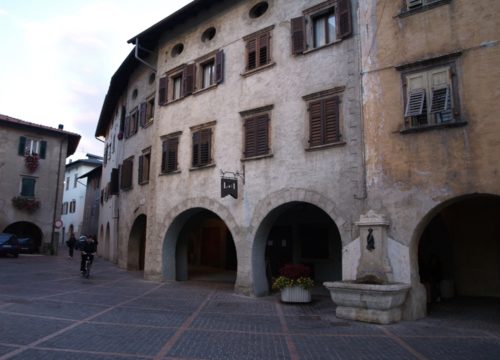
Ala
A small town of ancient Roman origin, Ala has always been a place of transit, strategically placed for both economic and military reasons as it lies on one of the most important lines of communication between Europe and the Mediterranean.
The art of making silk and velvet transformed the town, making it into an economic centre of primary importance and triggering substantial changes on both on an urban and cultural and artistic level. Many substantial works have been carried out on the original Medieval architecture, to refurbish and beautify the old buildings: the palaces of velvet merchants are still majestic testimonies to that period of wealth. Located along what is now Via Santa Caterina, the Pizzini palaces are two imposing buildings that hark back to era of velvet and silk. Palazzo Angelini and Palazzo de Gresti are still to this day monuments to a past rich in charm and significant historical events, above all from the velvet era, when Ala became a proper ‘town’.
The political and religious centre of the town, Piazza San Giovanni has always been home to the most symbolic buildings in Ala, starting with the town hall, the Church of San Giovanni, and Palazzo Malfatti – now Palazzo Azzolini. Heading towards Via Roma you come to Palazzo Zanderighi, now home to the public library, and continuing on from Villalta you come to the Gioppa Fountain and the Parish Church of Santa Maria Assunta.
facile da raggiungere
SIMILAR LOCATIONS
Discover locations similar to the current, based on their location or tags.
-
Pergine Valsugana
-
Rango
-
Ala
-
Riva del Garda

